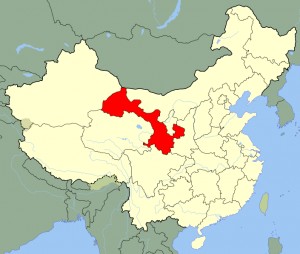For the second time this month, Gansu Province Health and Family Commission officials reported a death due Yersinia pestis infection, or the plague, according to the Zhongxin Network (computer translated).

Image/Joowwww
The patient was from Sangewa Ranch in Machang Village of Dangchengwan Township in Subei County. He was admitted and treated at the Gansu Subei Mongolian Autonomous County People’s Hospital with fever and shortness of breath before passing away.
According to the report, the man, a herder, was diagnosed with pneumonic plague based on clinical symptoms, epidemiological history, and lab test results.
Twenty-two close contacts were quarantined and found to have mo signs and symptoms of plague.
Plague is an infectious disease caused by the bacterium, Yersinia pestis. It is found in animals throughout the world, most commonly rats but other rodents like ground squirrels, prairie dogs, chipmunks, rabbits and voles. Fleas typically serve as the vector of plague. Human cases have been linked to the domestic cats and dogs that brought infected fleas into the house.
People can also get infected through direct contact with an infected animal, through inhalation and in the case of pneumonic plague, person to person.
Probably the most serious form of plague, pneumonic plague occurs when the bacteria infect the lungs and cause pneumonia. It is contracted when the bacteria is inhaled (primary) or develops when bubonic or septicemic plague spreads to the lungs.
Pneumonic plague is highly communicable under appropriate climate conditions, overcrowding and cool temperatures. Untreated pneumonic plague is frequently fatal.
Yersinia pestis is treatable with antibiotics if started early enough.
There are three forms of human plague; bubonic, septicemic and pneumonic. For more infectious disease news and information, visit and “like” the Infectious Disease News Facebook page
Gansu is a province located in northwest China.


One thought on “Another plague death in Gansu province, China”